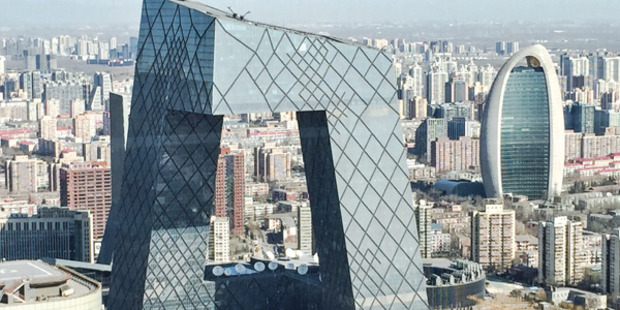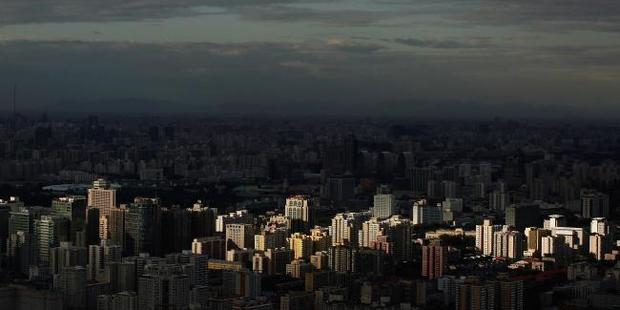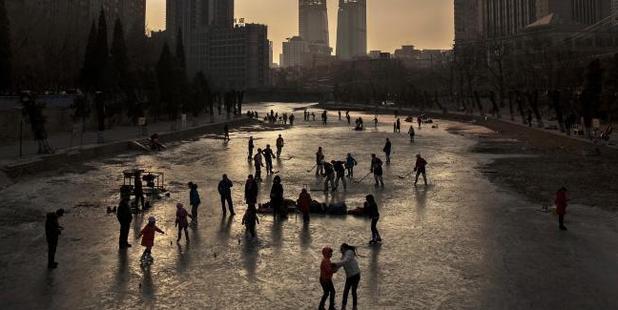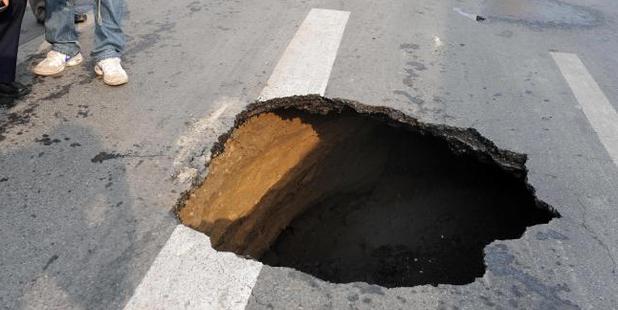
It's one of the world's most important, vibrant cities and home to 20 million people, but Beijing is literally collapsing under the weight of its own economic success.
Research has revealed that parts of the city are sinking at an alarming rate - by as much as 11cm per year - because of the overconsumption of groundwater.
The findings, published this month in the journal Remote Sensing, reveal the rate of sinking threatens "the safety of the public and urban infrastructure".
Uneven sinking prove catastrophic for the city's train network, buildings and other major structures, the study found.

Specialists from China, Spain and Germany worked with the National Natural Science Foundation of China to analyse data from thousands of satellite images and global positioning sensors, tracking changes in the ground level from 2003 to 2011.
They found that the city's Chaoyang district in the business heart of Beijing, is the worst affected, sinking at an annual rate of 11cm. Other districts slowly being swallowed up by the earth include Changping, Shunyi and Tongzhou.
Researchers also estimated that some areas sank more than 75cm during the study period.
The same group of scientists will release an analysis of sinking on high-speed railways and other critical infrastructure later this year.

THIRSTY CITY
Groundwater has sat beneath the city for thousands of years, but it is increasingly being used for domestic consumption, industrial use and agriculture.
The depletion of groundwater causes underlying soil to compact, creating a phenomenon called subsidence. The process is accelerated by the increasing weight of buildings bearing down as buildings continue to be constructed.
The region has been experiencing subsidence since 1935 but never at such a high rate.
Beijing is the fifth most water-stressed city in the world, with the demand for water exceeding the supply.
According to the state-run Sina news service, China's capital guzzles a whopping 3.5 billion litres of water each year, two thirds of which is pumped from beneath the city.
Researchers said 45 cities and municipalities across China had been red flagged as areas where "dangerous land subsidence has occurred or is occurring".
However, the process could be stopped and even reversed by halting all underground pumping.
In 2012, China's State Council approved a plan to prevent land subsidence that involves limiting groundwater usage and monitoring affected areas.
Last year, it completed the South-North Water Diversion Project, aims to channel 44.8 billion cubic meters of fresh water annually from the Yangtze River in southern China to the country's north through three canal systems.
The Chaoyang district, where the subsidence is perhaps most pressing due to its CBD status, recently announced plans to retire 367 water wells to reduce its reliance.
SUBSIDENCE VS SINKHOLES
Some readers may be wondering whether subsidence is one of the factors that can cause sinkholes.
Despite similarities the two are not the same. Land subsidence is a lowering of the ground while sinkholes involve a collapsing of the land.
According to the United States Geological Survey (USGS), sinkholes occur when the underlying rock is soluble in groundwater, which tends to be acidic. Limestone, carbonate rock and salt beds all qualify.

When the rock dissolves, it leaves an underground cavity. A sinkhole is created when there is no longer enough rock left to hold up the land surface. It can also occur in areas that have been heavily mined or on reclaimed land.
China also has a huge sinkhole problem but affected areas tend to be more localised (see the photograph below) and occur more frequently in regions that have been mined too heavily.
Beijing is not the only city plagued by subsidence, with Mexico City, Jakarta and Bangkok also experiencing that sinking feeling.
